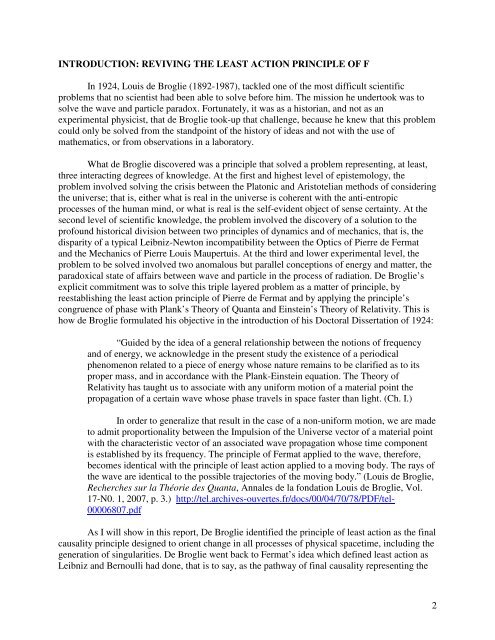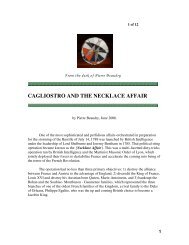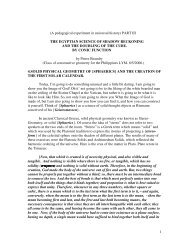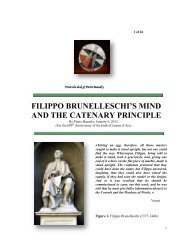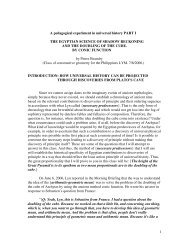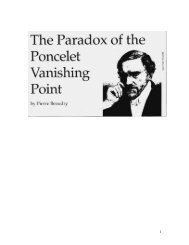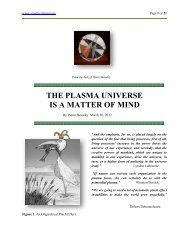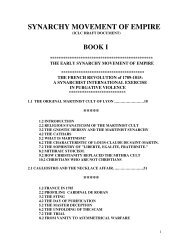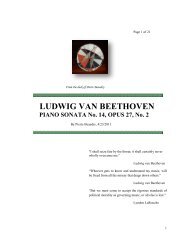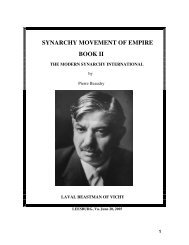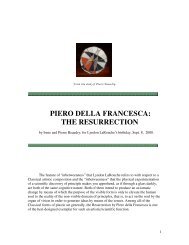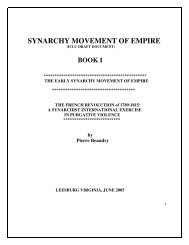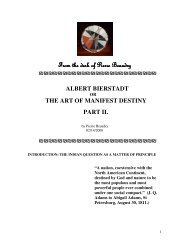LOUIS DE BROGLIE : THE WAVE AND PARTICLE PARADOX
LOUIS DE BROGLIE : THE WAVE AND PARTICLE PARADOX
LOUIS DE BROGLIE : THE WAVE AND PARTICLE PARADOX
Create successful ePaper yourself
Turn your PDF publications into a flip-book with our unique Google optimized e-Paper software.
INTRODUCTION: REVIVING <strong>THE</strong> LEAST ACTION PRINCIPLE OF FIn 1924, Louis de Broglie (1892-1987), tackled one of the most difficult scientificproblems that no scientist had been able to solve before him. The mission he undertook was tosolve the wave and particle paradox. Fortunately, it was as a historian, and not as anexperimental physicist, that de Broglie took-up that challenge, because he knew that this problemcould only be solved from the standpoint of the history of ideas and not with the use ofmathematics, or from observations in a laboratory.What de Broglie discovered was a principle that solved a problem representing, at least,three interacting degrees of knowledge. At the first and highest level of epistemology, theproblem involved solving the crisis between the Platonic and Aristotelian methods of consideringthe universe; that is, either what is real in the universe is coherent with the anti-entropicprocesses of the human mind, or what is real is the self-evident object of sense certainty. At thesecond level of scientific knowledge, the problem involved the discovery of a solution to theprofound historical division between two principles of dynamics and of mechanics, that is, thedisparity of a typical Leibniz-Newton incompatibility between the Optics of Pierre de Fermatand the Mechanics of Pierre Louis Maupertuis. At the third and lower experimental level, theproblem to be solved involved two anomalous but parallel conceptions of energy and matter, theparadoxical state of affairs between wave and particle in the process of radiation. De Broglie’sexplicit commitment was to solve this triple layered problem as a matter of principle, byreestablishing the least action principle of Pierre de Fermat and by applying the principle’scongruence of phase with Plank’s Theory of Quanta and Einstein’s Theory of Relativity. This ishow de Broglie formulated his objective in the introduction of his Doctoral Dissertation of 1924:“Guided by the idea of a general relationship between the notions of frequencyand of energy, we acknowledge in the present study the existence of a periodicalphenomenon related to a piece of energy whose nature remains to be clarified as to itsproper mass, and in accordance with the Plank-Einstein equation. The Theory ofRelativity has taught us to associate with any uniform motion of a material point thepropagation of a certain wave whose phase travels in space faster than light. (Ch. I.)In order to generalize that result in the case of a non-uniform motion, we are madeto admit proportionality between the Impulsion of the Universe vector of a material pointwith the characteristic vector of an associated wave propagation whose time componentis established by its frequency. The principle of Fermat applied to the wave, therefore,becomes identical with the principle of least action applied to a moving body. The rays ofthe wave are identical to the possible trajectories of the moving body.” (Louis de Broglie,Recherches sur la Théorie des Quanta, Annales de la fondation Louis de Broglie, Vol.17-N0. 1, 2007, p. 3.) http://tel.archives-ouvertes.fr/docs/00/04/70/78/PDF/tel-00006807.pdfAs I will show in this report, De Broglie identified the principle of least action as the finalcausality principle designed to orient change in all processes of physical spacetime, including thegeneration of singularities. De Broglie went back to Fermat’s idea which defined least action asLeibniz and Bernoulli had done, that is to say, as the pathway of final causality representing the2


